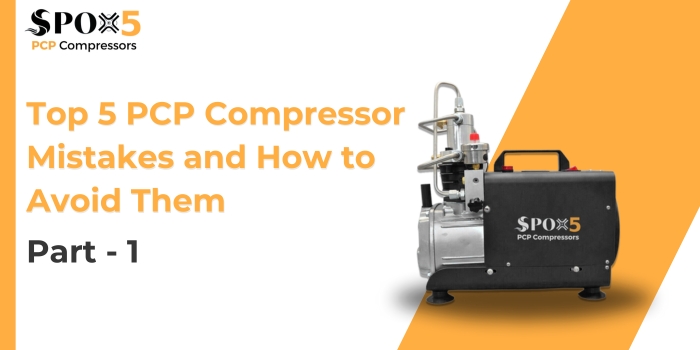PCP (progressing cavity) compressors are the workhorses of the compressed air world, powering everything from air rifles to industrial applications. But like any powerful tool, they require proper handling to ensure safety, efficiency, and longevity. Here, we explore the top 5 common mistakes with PCP compressors and provide solutions to keep your air source running smoothly.
Mistake #1: Ignoring the Manual
The Problem: Every PCP compressor model has its own specific capabilities and limitations outlined in the user manual. Ignoring these guidelines can lead to a world of trouble.
The Consequences: Skipping the manual can result in:
- Reduced Efficiency: Operating outside the recommended pressure range or using the wrong settings can strain the compressor and decrease its overall efficiency.
- Premature Wear and Tear: Pushing the compressor beyond its limits can accelerate wear on internal components, shortening its lifespan.
- Safety Hazards: Operating with improper procedures or exceeding pressure limits can increase the risk of accidents and injuries.
The Solution: Make the user manual your best friend. Familiarize yourself with:
- Recommended Pressure Range: Each model has a specific pressure range it’s designed to handle. Always operate within these limits.
- Compatible Fluids: The manual will specify the types of fluids the compressor can handle safely. Using incompatible fluids can damage internal components.
- Maintenance Schedule: The manufacturer recommends a specific maintenance schedule for oil changes, filter replacements, and inspections. Regular maintenance ensures optimal performance and longevity.
Mistake #2: Neglecting System Design
El problema: Centrarse únicamente en el compresor y descuidar el diseño de todo el sistema puede provocar problemas de rendimiento.
The Consequences: A poorly designed system can put undue stress on your PCP compressor and hinder its ability to perform efficiently:
- Improper Pipe Sizing: Undersized pipes create excessive back pressure, reducing the compressor’s effective PSI output and potentially leading to overheating.
- Filtración inadecuada: Si no se utilizan filtros adecuados antes del compresor, pueden entrar contaminantes en el sistema, causando daños a los componentes internos.
- Ignorar la contrapresión del sistema: Ignorar o no gestionar la contrapresión de los equipos aguas abajo puede reducir la capacidad del compresor para suministrar el caudal deseado.
La solución: Cuando planifique un sistema de compresores PCP, tenga en cuenta todos los aspectos del diseño:
- Dimensionamiento de la tubería: Consulte a un ingeniero cualificado para determinar el diámetro de tubería adecuado en función del caudal y la caída de presión requeridos.
- Filtración: Instale filtros adecuados en la entrada del compresor para eliminar cualquier contaminante del aire o gas entrante.
- Gestión de la contrapresión: Identificar las posibles fuentes de contrapresión aguas abajo y aplicar estrategias para minimizarla, como el uso de tuberías de mayor diámetro o la instalación de válvulas de alivio de presión.
Stay tuned for Parts 2 & 3 of this blog series, where we’ll explore additional mistakes to avoid and delve into proper maintenance practices for your SPOX5 PCP compressor!

